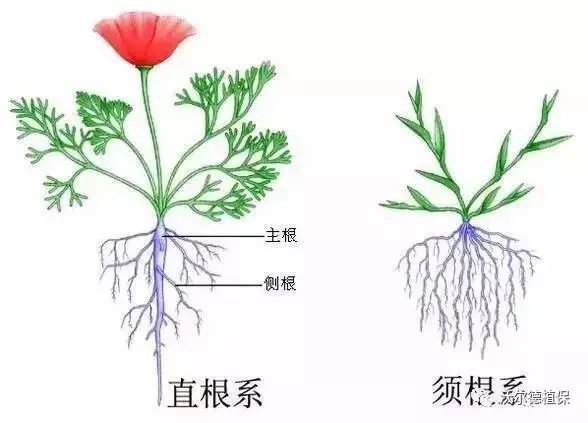Any crop is born from the root and dies from the root. A strong and developed root system is the basis for crop growth and high yield. However, in the process of crop growth, sometimes the color of the root system of the crop will change. There is a saying: white roots are strong, yellow roots are life-saving, black roots are diseased, and gray roots are deadly.

1. White root is strong
White roots are generally new roots or the tip of old roots. These roots have strong oxygen secretion ability, which can make the surrounding soil oxidized, forming an oxidation circle, oxidizing the surrounding soluble ferrous iron into ferric iron precipitation, So that it does not accumulate on the surface of the roots, the white color of the roots is maintained. Baigen has strong physiological functions, and its vitality and absorption capacity are very strong, so it is said that Baigen is strong.
2. Huanggen saves life
Yellow roots generally appear on old roots and on the basal surface of roots. Due to the aging of these roots, the cell wall of the outer cortex thickens, and ferric iron is deposited on the roots, forming a yellow-brown iron film. This layer of iron film has a protective effect, which can prevent toxic substances from penetrating into the inside of the root, but the absorption capacity of this root system is greatly weakened, so it is said that the yellow root saves life.
3. Heigen's disease
After long-term flooding, due to insufficient oxygen in the soil, there are more ferrous iron, and at the same time, the organic matter undergoes anaerobic decomposition to produce a series of toxic substances such as hydrogen sulfide. When hydrogen sulfide and ferrous iron combine, ferrous sulfide (black) is formed and precipitated on the root surface, making the root black. This root physiological function further declines, so the black root is sick.
4, gray roots
If the soil lacks iron, the hydrogen sulfide cannot be eliminated, which can inhibit the respiration and absorption function of the root system, and cause the root poisoning and death. The symptoms of hydrogen sulfide poisoning are that when the roots are pulled up and observed, the roots are gray and water-stained, with the smell of rotten eggs, so the gray roots are fatal.
In today's time when soil problems are frequent, high yield and high efficiency can only be achieved by doing a good job of rooting and mulching and strengthening the roots of crops. To sum up, there are six major measures to ensure that crops are "deep-rooted and leafy, robust and high-yielding".
1. Adjust the PH value of the soil in the plough layer
Unreasonable fertilization for many years leads to changes in the PH value of the cultivated layer, which is the root cause of soil problems. Soil acidification or salinization can be adjusted by applying medium and trace element bacterial fertilizer, and metasilicic acid can effectively adjust the pH value of soil.
2. Increase organic matter
Organic matter is selected for fertile soil, and its function is to loosen soil, breathe air, form aggregate structure, retain water and fertilizer, improve microbial activity, and promote root development.
3. Increase the application of biological bacterial fertilizer
Activating the soil solves the problem of soil compaction, provides full-value nutrients for crops, and can prevent and control root diseases, prevent diseases, and inhibit bacteria.
4. Reasonable irrigation and drainage
It is recommended to use small water frequently, micro-irrigation or drip irrigation, and at the same time protect the aggregate structure of the soil, which is conducive to the growth of roots. At the same time, the drainage system of open field crops is as important as the irrigation system in the rainy season to prevent waterlogging and prevent dead roots.
5. Prioritize functional and healthy fertilizers that are friendly to the soil environment for flushing fertilization
Functional water-soluble fertilizer, containing humic acid or amino acid, has positive significance for supplementing organic matter, increasing ground temperature, improving soil permeability, improving fertilizer utilization rate, and rooting and mulching roots.
6. Cultivation and loosening of soil
An agricultural proverb goes "under the hoe, there is water and fire", which means that hoeing (cultivating and loosening the soil) improves the drought resistance of crops (with water), and at the same time effectively increases the ground temperature (with fire). Especially in the seedling stage of crops, the root system is not yet fully developed, so cultivating and loosening the soil is one of the indispensable measures to increase the ground temperature, enhance the soil permeability and promote the development of the root system.
Previous: Foliar fertilizer knowledge